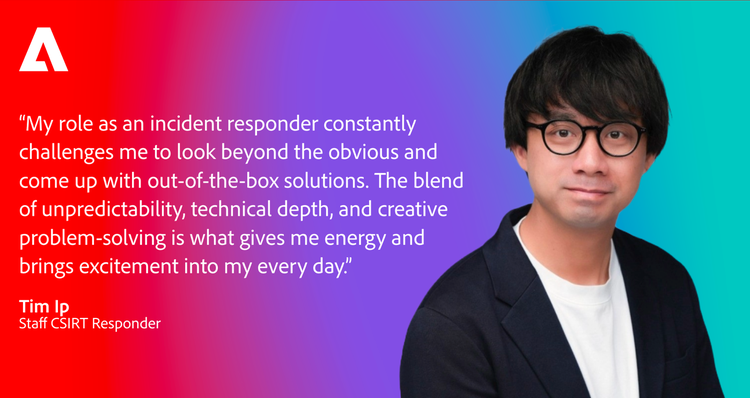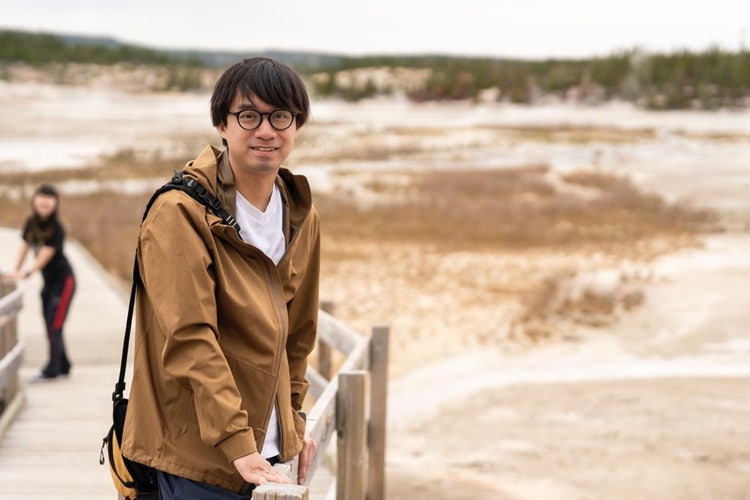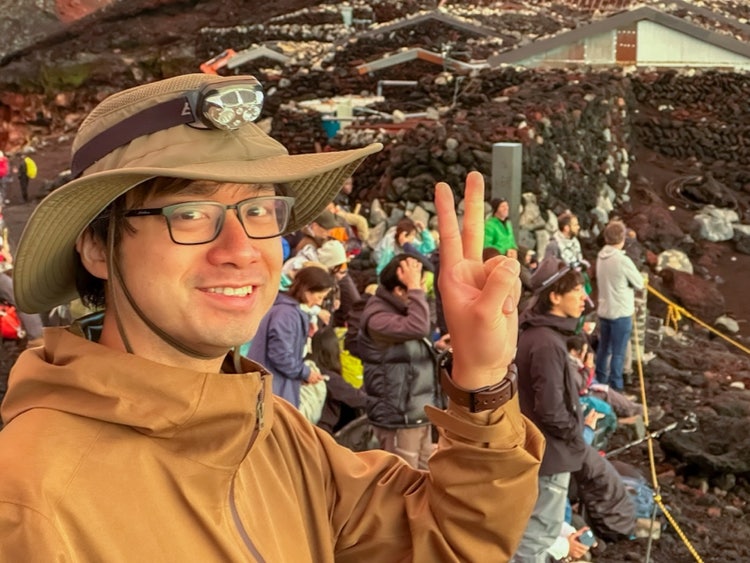Behind the Scenes with Tim, Staff CSIRT Responder

Among the many teams that keep an organization secure, cybersecurity incident responders, often known as CSIRT, play a key role on the front lines. They’re often the first to detect, investigate, and contain threats, working quickly under pressure to defend against bad actors in real time.
Wondering what it’s like to be a frontline defender? Join us for a behind-the-scenes chat with Tim Ip, Staff Cybersecurity Incident Responder, whose curiosity and passion for problem-solving fuels his work every day.
Tell us about your career journey and background. What initially got you interested in cybersecurity?
I began my university studies in a program that combined electrical and information engineering. Initially, my dream was to enter the electronics industry and help develop new products. In my first year, I focused on building a solid foundation in electric circuits, computer theory, and programming. However, as I delved deeper, I found myself increasingly drawn to the computing side, particularly low-level systems like assembly language and communication theory. I realized that what truly fascinated me was understanding how things worked at a fundamental level.
This curiosity led me to learn about cybersecurity. I was intrigued by how it challenged me to think critically and outside-the-box. It also gave me the opportunity to dive deeper into computer fundamentals, learning how to secure systems from the ground up.
That curiosity became a turning point. I came to see security as not just about defense, but as a field driven by creativity and problem solving, almost like tackling a puzzle. During my second year of my studies, I interned as a security intern at an IT outsourcing company. The hands-on experience confirmed that cybersecurity was where I wanted to be, and from that point forward, I started shaping my path around it, working toward developing the technical and analytical skills needed to break into the field.
What do you enjoy most about your current role?
As a staff cybersecurity incident responder, I currently lead Adobe’s security forensics lab, managing the development of various automation pipelines to security investigations. I also play an active role in analyzing and investigating different cyberattacks, helping to improve our detection capabilities.
What I enjoy most about my job is that no two days are ever the same. Every situation I face is a unique puzzle, and there’s no fixed script or regular work plan. Our Cybersecurity Incident Response Team (CSIRT) defends against real-world threats, often under tight time constraints, which requires us to think critically and act creatively. My role as an incident responder constantly challenges me to look beyond the obvious and come up with out-of-the-box solutions, whether I’m building a new toolchain or dissecting an advanced attack pattern. That blend of unpredictability, technical depth, and creative problem-solving is what gives me energy and brings excitement into my every day.
Overall, being on the front lines of real-world cyberattacks has been an invaluable experience, with each case teaching me something new and helping me sharpen my skills. Over time, those experiences have helped me build my confidence and prepared me to respond quickly and effectively to future threats. This is a place where I feel like I’m always growing, both personally and professionally.
What is your favorite part about working at Adobe?
One of my favorite things about working at Adobe is the autonomy I’m given to turn my ideas into real projects. I’m always encouraged to experiment, innovate, and build solutions that have real impact – not just for Adobe, but also for the broader security community. That kind of trust and support is incredibly motivating.
I also appreciate the opportunity to connect with my colleagues from all over the world. The diversity of backgrounds, perspectives, and experiences across our teams make collaboration both enriching and inspiring. I regularly engage with people at all levels from junior members to our leadership team, which gives me a valuable perspective that helps me grow both as a technical contributor and communicator. There’s a strong culture of knowledge-sharing here, and I enjoy contributing to it whenever I can – whether it’s sharing findings, offering guidance, or learning something new from others.
What is one piece of advice you would give to someone interested in pursuing a career in cybersecurity?
Cybersecurity can be a challenging and fast-changing field. To succeed, you need more than just good technical skills – you need genuine interest and passion. It's important to stay curious and be willing to continuously learn, because what you know today might be outdated tomorrow.
My biggest piece of advice is don’t skip the fundamentals. A solid understanding of operating systems, networking, and programming will give you the foundation to tackle more advanced topics down the road. From there, start building. Create your own projects, set up a home lab, break things (ethically), and explore how systems behave under different conditions. Sharing your work on GitHub or contributing to open-source projects is a great way to build credibility and learn from others.
Also, get involved in the community. Attend security meetups and conferences, and don’t be afraid to volunteer or share your experiences. That’s how I met many of my own peers and mentors. Participating in Capture the Flag (CTF) competitions or other challenges is also another great way to develop your skills under pressure while having fun.
Finally, stay up to date with security news and trends. Cybersecurity is a field that never stands still, and neither should you.
Finally, what is one thing people would be surprised to know about you?
I’m originally from Hong Kong, and I speak English, Chinese, and Japanese. People are often surprised by how useful this has been in my cybersecurity work. During investigations, it’s not uncommon to come across evidence or artifacts written in different languages, whether it’s attacker’s comments, tool output, or malware code annotations. Being able to understand those languages has helped me get a clearer picture of what’s happening and what the attacker’s intent might be. It’s a unique skill that bridges culture and technology, and it’s helped give me an edge in real-world cases.


Subscribe to the Security@Adobe newsletter
Don’t miss out! Get the latest Adobe security news and exclusive content delivered straight to your inbox.